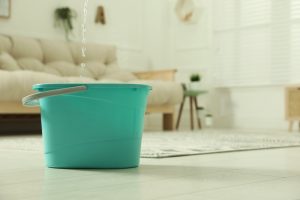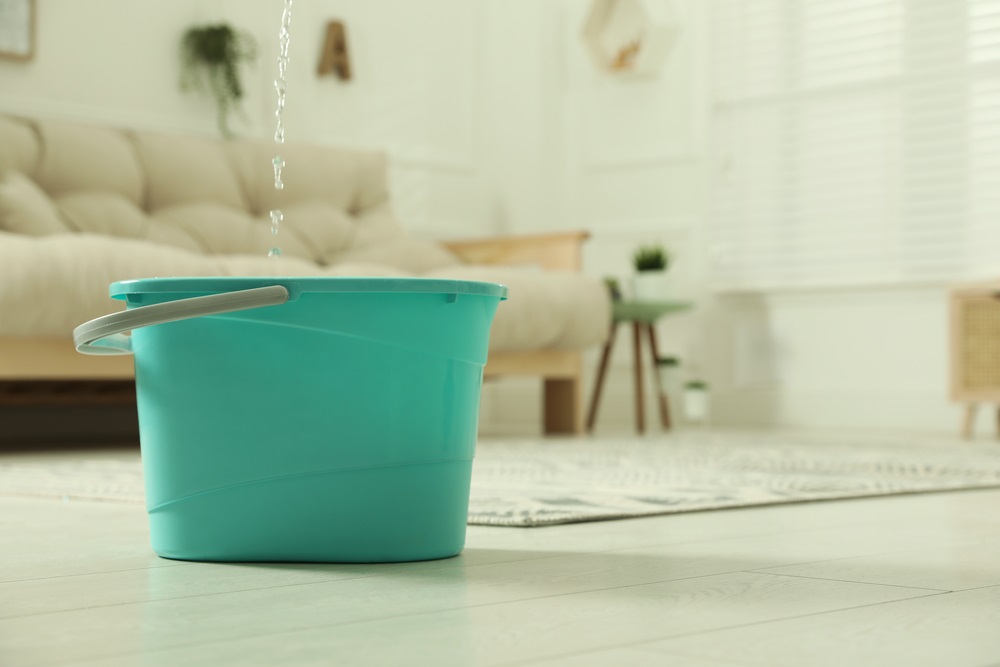Whether you are selling your home or viewing properties its essential you know how to spot the signs of a leak. Stuart Kerr explains what to look out for and how to prevent and manage any water damage
 Most UK homes will suffer from water damage. The real trouble with water damage, dampness, or moisture is not only the costly toll it takes on a property, but the unseen risks it poses on a homeowner’s health and wellbeing.
Most UK homes will suffer from water damage. The real trouble with water damage, dampness, or moisture is not only the costly toll it takes on a property, but the unseen risks it poses on a homeowner’s health and wellbeing.
Preventative measures are in place for all kinds of possible damages that could occur within a property.
Whether it is flood controls for coastal homes, proper insulation for properties facing bitter winters, or even weed removal for gardens under siege by pests, homes across the UK are prepared to weather all kinds of stresses.
But when it comes to water (including high moisture levels or the presence of dampness), how well prepared are homeowners?
Over three quarters (that’s approximately 77%) of UK homes suffer from water leaks. The costly toll of unmanaged leaks is amplified when you consider not only the damage on your property, but the detrimental impact it can have on your physical and financial wellbeing.
The best chances of leak control and prevention occur when a homeowner or landlord reads the signs of improper moisture build-up, dampness, or water damage.
Water damage is problematic for homeowners because it’s just as discreet as it can be destructive.
This means moisture or dampness can occur quickly and in hard to notice areas of a house, where the source of water damage seems elusive. A leak could be trapped behind a wall, under a floor, or it’s from another part of a property.
Water damage explained
Leaks can cause a multitude of problems in homes – from mould and condensation to structural and possession damage – all coming with their own health and safety ramifications.
Respiratory infections such as asthma and skin problems like rashes are just some of the inflictions which can arise from mould and damp. Meanwhile physical injuries from structural damage could be fatal if ceilings or walls collapse.
There’s a misconception water damage will only inconvenience your home and the resolution is a simple piece of handiwork to rectify a broken pipe located on a property.
If unmanaged, however, a leak can develop into severe property damage, eroding essential plumbing systems and collapsing foundational structures. This will hurt the market value of a home and result in costly repairs.
Often professionals will identify how a leak not only means property damage, but it represents the loss of a resource – water.
In fact, across the UK and Wales, daily leaks in homes amounts to approximately three billion litres (or 660 million gallons) in wasted water. Putting this in perspective, the BBC reports how this is enough wasted water to equate to roughly 1,180 Olympic swimming pools.
If leaks are common and the risks are too costly to ignore, what can be done?
Identify, prevent and manage a leak
Identification
The easiest and most common sign of a leak is when your property starts to suffer from dampness or unusual moisture build-up.
Where you notice water pooling or gathering on surfaces, check the affected area for damage immediately. If walls or corners start to flake, darken, discolour, or crack and bubble, then excess water is likely affecting your property.

The visual signs of damage are often obvious, because moisture or dampness will form as irregularities in the appearance of your house.
Checking the exterior of your house frequently is advisable as water damage will affect all areas of a property. This might even occur from nearby flooding or weather conditions, or from internal problems with your plumbing.
Homeowners can creatively monitor water leaks outside of the usual signs of decay. Checking your bills and regular water usage and noticing any sharp increases in rates could be symptom of underlying water damage.
You will be familiar with your water usage habits, so if this is not reflected in your bills, then there could be an undiagnosed leak within your property.
Preventing leaks
The best way to stop a leak from occurring is to prevent water from causing damage in the first place.
Leak prevention requires proactive housekeeping, such as checking guttering and other pipework is free from debris.
Homeowners should investigate plumbing immediately if they are suspicious, keep an eye on leaking ceilings, walls and floors and conduct routine maintenance where appropriate.
The goal with leak prevention is to minimise the effect and role of damage on a property. If homeowners become familiar with their homes – including the age and condition of the plumbing and other water systems – then they can proactively check for leaks before they occur.
Homeowners can even itemise areas in their homes where they think water is most likely to build-up, such as around a bath or shower. If they control water use in these areas, they could greatly reduce risks of avoidable water damage.
Viewing a property
If a home visit goes well, buyers should be inspecting for signs of damage before they commit to a mortgage.
Buyers should be cautious about homes with historical damage, or where plumbing systems or bathrooms are dated or show signs of wear. You can bargain to obtain a home with a view to renovating these areas, but you will need budget for these changes.
Always keep an eye open for the signs of damage or where a leak could occur. Be upfront and address any concerns with an agent, because inheriting a house with a history of damage could lead to long term financial pains.
But if a house has had a leak in the past, check if it has been professionally repaired.
The side-effects of water damage
Stagnant water that gathers behind or on walls, floors and other areas of a house can lead to harm on the occupants’ health.
Those most likely to feel the effects of dampness, which can grow into mould, include younger children, those with sensitive skin, and people with issues or weakened immune systems.
Where dampness turns into mould, this can produce toxic allergens, which are circulated into the air. If inhaled or touched, mould spores can cause allergic reactions that will impact human health and may even induce asthmatic attacks.
To avoid and prevent health risks, get to grips with how mould can occur within a property. Mould tends to thrive in places where moisture builds up within a house and gathers – for example, window frames.
Mould can also occur where condensation builds and goes unmanaged, especially where ventilation is found to be inadequate, leaving a house vulnerable to mould.
When this happens, plan to take immediate action, especially if preventive measures fail. Rather than handle water damage by yourself, you should seek expert advice. Specialist equipment will ensure that all traces of mould, moisture and dampness are detected and removed.
When you use reliable leak detection services, you can minimise the short- and long-term risks of property damage associated with water.
Stuart Kerr is managing director of Restorations UK














